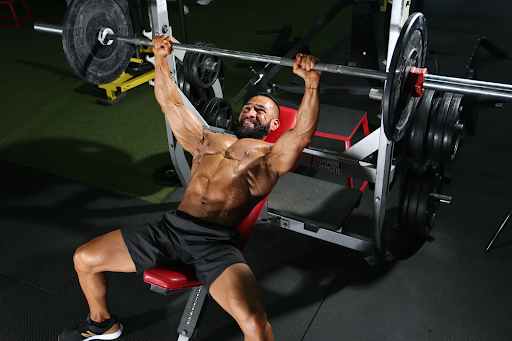

The Complete Chest Workout Guide
Chest workouts are more nuanced than just the humble bench press. Most people bench press as a sure-fire way of getting pecs to pop and do more for their physique. However, there are more ways than one to get a well-defined chest apart from repetitively hitting the bench press on end.
Notably, there are countless variations you can add to your full chest workout than you can imagine – in fact, more than 100.
However, there are a couple of popular workouts that most men and women prefer to stimulate chest hypertrophy. For example, pushups are commonly known for being an impeccable allrounder, and there is a plethora of adaptations, each targeting specific areas of the chest. This is only the case if you stick to the proper form all through.
While working the chest is straightforward, the sheer quantity of workouts can make it harder to find an effective exercise suitable for you. As such, there are some ideal workouts that workout zealots should know. Before going through some of the popular options, some basics of chest workouts need to be ironed out.
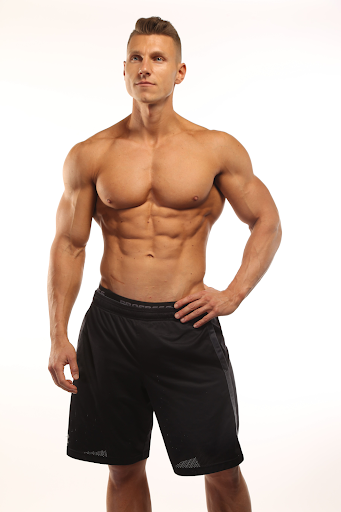
Muscles Worked
The chest is also referred to as the rib cage or pectoral region. Here, you find some of the largest muscles in the body arranged in three defined layers.
Most noticeable is the large pectoralis major. This bulky muscle is fan-shaped, covering most of the chest – from the sternum to its insertion point in the humerus. When the pectoralis major contracts, it results in internal rotation of the arm or movement across the body.
Underneath the pectoralis major is its smaller counterpart, the pectoralis minor. Pectoralis minor primarily stabilizes shoulder blades, but it also can bring the arm down from the elevated position.
Finally, the serratus anterior covers almost all sides of the rib cage. The serratus muscle is responsible for facilitating overhead lifting, such as when hitting an overhead dumbbell press.
Other Muscles That Are Worked
Although a full chest workout primarily engages the three muscles expounded above, a well-executed exercise goes a long way in building a well-built upper body.
For instance, a bench press and pushup will require the action of triceps and biceps. On the other hand, chest cable workouts result in back and abs engagement too. Chest dips are also suitable for active engagement of abs, lats, and back muscles. Ideally, a spot-on chest workout should engage other areas of the upper body.
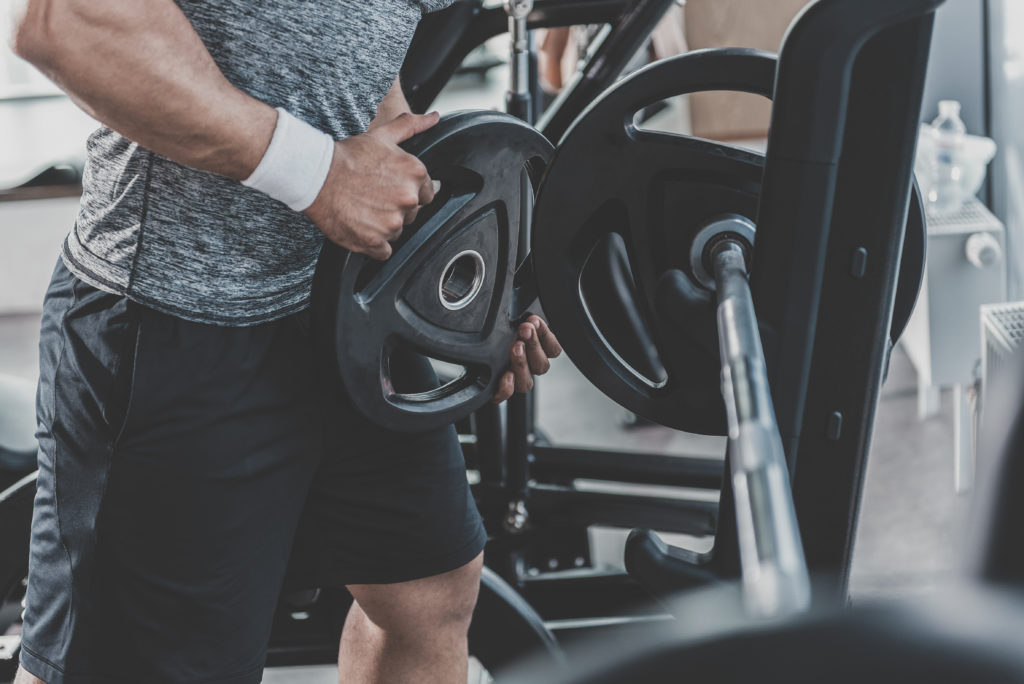
Close up male arms preparing sports equipment before practicing on it in modern health club
Choosing The Right Weight
If you want faster results, weight training facilitates the deeper engagement of muscles for faster growth. Whether starting a new strength training program or consolidating your gains and stimulating further bulking, choosing the proper weights is a chief consideration.
While there isn’t a standard weight range for each person, there are some tips to ensure the weight isn’t too heavy or too light. Here’s what you need to know about choosing the right weight:
- Use the first set to determine your fitness
This is especially important for newcomers and if you have taken off training time in the gym and getting back into it. Let your first couple of sets tell you how heavy you can lift and what weight to use in the next workout day.
Expert trainers recommend using weights that generate muscle fatigue close to the end of a set. For example, if you are doing a 12-rep set, where you want it to begin to feel the difficulty is around rep 8-10, while still getting all 12 reps in your set.
- Don’t work with weights that are too light.
On the other hand, if weights are too light, you do not activate muscles or shift the dynamics from the chest. You will probably blast through a set and even do more reps than necessary.
- Switching up between the kinds of weights you can use
The most popular weights are barbells, dumbbells, and kettlebells. Each of these is used for specific exercises as they require a varying range of motions. For example, you can lift quite heavy barbells during a bench press but may not reach the same limits while using dumbbells. Therefore, pick a suitable range of weights based on each exercise’s variation and range of motion.
- Test your limits but listen to your body
While there is a temptation to lift heavier weights, remember to listen to what your body has to say. Lifting heavier weights than you are primed to quickly results in injury. Conversely, very light weights are ineffective. Therefore, when you are ready to transition to the next stage, do so cautiously and always stick to your form.
Remember that selecting the right weight is all about trial and error. It isn’t based on what most people are using but what you are comfortable working with. Always stick to your program.
25 Chest Exercises
Growth is stimulated by changing the combination of full chest workouts. There are a plethora of variations to try out and improve your upper body strength. But if you are looking for something new to try out, here are some full chest workouts to think about. Mostly all workouts below can be done in 3 sets with 6-12 reps per set giving yourself a 2-minute break in between sets. Make sure you stretch and are using proper form.
- Arnold press
The Arnold press is effective for stimulating whole-rounded shoulder and chest development. It features a wide range of motion necessary for joint structure enhancement.
Technique:
Grab a pair of dumbbells with your palms facing your face and elbows pointing forward. From this position, rotate your wrists through 180-degrees while lifting the dumbbells. At the top of the lifting phase, your palms should be facing forward. In the concentric phase, rotate your arms in reverse formation until palms face you and dumbbells are shoulder level.
- Band resisted fly
This is a great workout that is primarily for the shoulders and chest. You will need to fix two bands on a steady shoulder-level structure behind you.
Technique:
Stand with your back facing the band attachment point. Grasp the ends of the bands on either hand, take a forward step so that your arms form a right angle to your sides but keep a slight flex at the elbows. Next, pull both bands until your palms are in front of you as if giving a bear hug. Pause at the top of the movement and repeat.
- Band-resisted pushup with feet elevated
Endurance and resistance are taken a notch higher by elevating your feet on a bench or chair and adding an elastic band. The band places pressure on your triceps, biceps, and chest.
Technique:
Get into the decline pushup position and pass the elastic band over your back, and anchor either end of the band on your grounded palms. Engage your core and back to keep a neutral back. From here, proceed to do pushups for a complete set.
- Cable crossover
This is a tremendous full chest workout that features two variations – low-to-high or high-to-low. However, both result in impeccable growth of pecs, triceps, and upper back.
Technique:
When executing the low-to-high variant, set the crossover machine to the lowest pulley adjustment. With your back facing the crossover machine, grab the ends of the cable handles on each hand with palms facing up. Place feet shoulder-width apart, core and back engaged. From here, pull the handles up and forward to shoulder level before slowly returning to your original position.
Alternatively, set the cable machine to the highest pulley option and grab handles using an overhand grip for the high-to-low setup. Stand in a T-like posture with feet shoulder-width apart and keep your elbows slightly flexed. Pull the cable forward and down until they are hip level before slowly bringing them back to starting position.
- Cable fly
Cable exercises are underrated – cables keep muscles under constant tension, which gives your pecs, delts, triceps, and traps a reckoning. Moreover, they include a wide range of motion that is perfect for toning joint structures.
Technique:
You will be using a crossover machine for this exercise after fixing D-handles to high-setting pulleys. Grasp each handle with your back facing the cable machine. Take one step forward and stand in a T-shape posture, maintaining a slight flex at the elbows. Brace your core and pull the stirrup handles across your body. Gradually return to the starting stance and repeat.
- Chest dips
Chest dips are impeccable for stimulating muscle and joint integrity. Notably, they are efficient for working pecs, serratus, upper back, and arms. As such, they activate a longer chain of muscles resulting in muscle growth and fat loss.
Technique:
Set up the dip station bars and grab them with palms facing inwards and arms locked out. Transition into the lowering phase until elbows are right-angled. Engage your triceps and chest muscles to push to your initial position and repeat.
If new to this exercise, look for an assisted dip machine at your gym
- Clap pushup/ plyo pushup
Plyo (plyometric) pushups are extensively versatile and should also be seen as a high-intensity cardio workout. However, they are only suitable for intermediate to advanced level professionals because of a high risk of injury. Otherwise, this variation exceptionally activates pecs, triceps, and biceps.
Technique:
Get down to the pushup position; feet spaced hip-width apart. Brace your core and back muscles to stabilize your spine. Get into the concentric phase using regular pushup movement. But in the eccentric phase, blast off energetically, lifting both palms off the floor and clapping once. Land on your palms and repeat this movement for a full set.
- Close-grip barbell bench press
The close grip press reduces the pressure your shoulder has to endure while also engaging chest muscles.
Technique:
Get positioned on a bench while holding a barbell with an overhand grasp with palms around chest level. From this position, push the bar up until the arms get close to locking out. Gradually lower the bar close to your chest and press back up when almost at the chest. Repeat this movement for a complete set.
- Close-grip pushup
The close-grip pushup is used to activate the inner aspect of the chest. The same rules as the usual pushups apply.
Technique:
Get into the pushup position but use a narrower than shoulder-width palm placement – the closer they are, the harder it gets. Follow the same movement as conventional pushups and repeat for a complete set.
- Decline dumbbell bench press
Dumbbells promote a more comprehensive range of motion not offered by the humble barbell.
Technique:
While using a declined bench, grab dumbbells with a neutral grip and lift them above your chest. Drop one arm slowly to shoulder level, then push back up while squeezing your chest during the movement. Repeat the same action with your other arm.
- Decline pushup
Decline press-ups are ideal for stimulating muscle building in the medial part of the chest and lower pectorals. Additionally, your arms and back are also involved in the movement.
Technique:
Plant your feet on top of a bench, or any similar height elevated platform. Place hands shoulder-width apart and palms anchored on the floor. Engage your core and back. Gradually descend until your chest almost brushes the floor underneath, pause for a couple of seconds, and push back to starting position.
Instruction – 3 sets of 8-10 reps, then take a two-minute break.
- Dumbbell squeeze press
A simple tweak to the dumbbell press shifts attention from arms to pecs. Additionally, squeezing dumbbells during the press keeps the muscle under tension all through for optimal gains.
Technique;
Lie flat on a bench and grab dumbbells using a neutral grip in each hand. From the starting position with arms straight and dumbbells above your chest, flex your elbows and lower dumbbells until they are beside your chest. Briefly pause then resume to starting position and repeat.
- Hand release pushup
Hand-release pushups adequately work your pecs (triceps and biceps, too) and improve your range of motion while performing other pushup variations.
Technique:
Get into the pushup position. the starting position is at the top. Keep the core and back engaged as you lower your body executing a pushup. At the bottom, lay flat on your chest and lift your hands off the floor and draw shoulder blades together. Replace hands and push back to the top and repeat the movement.
- Incline barbell bench press

Another variant of the bench involves the use of a barbell in the incline position. This position stimulates shoulder, triceps, biceps, and chest hypertrophy.
Technique:
Lie on an inclined bench. Grab a barbell with palms facing away from you and raise it above your shoulders. Press up and lock both arms, squeeze your chest and gradually depress to your original position. Repeat.
- Incline dumbbell bench press
Like the incline barbell bench press, the dumbbell adaptation is great for shoulder and arm muscle growth. Additionally, this also targets the chest, and the outcome is well-defined pecs and serratus growth.
Technique:
Set up an inclined bench, grab dumbbells with a neutral grip, and lift them above your chest. Drop one arm slowly to shoulder level, then push back up while squeezing your chest at the top of the eccentric phase. Repeat the same movement with your other arm.
- Incline dumbbell fly
Pecs are predominantly involved in the inward movement of the arms. Increasing the range of motion means they sustain more significant pressure for increased hypertrophy.
Technique:
Lie with your back on an incline bench, holding dumbbells on each palm by your shoulders. Engage your core and extend your arms but keep a slight flex before arms lock. From this position, lower your arms to your sides, then activate your pecs and push the dumbbells until they are directly above your chest.
- Incline pushup
The trusty incline pushup has for a long time been used to develop clean-cut pecs. As a bonus, performing incline pushups also grows your triceps and back.
Technique:
Place your palms on a bench shoulder-width apart such that your body forms a 45-degree angle with the floor. From here, follow the same movements as conventional pushups while keeping your spine neutral and core activated.
- Isometric chest squeeze
This is an underrated exercise even though it is ideal for the wholesome promotion of joint integrity and chest growth – a simple full chest workout for extensive muscle engagement.
Technique:
Hold a pair of dumbbells chest level palms facing each other and with elbows forming a right angle. Adequately adjust your feet for a stable base of support. From this position, squeeze the dumbbells together while pushing straight up until elbows are slightly above the shoulders. Pause for five seconds and return to the start.
- Medicine ball crossover pushup
Challenge your endurance and balance by performing the medicine ball crossover pushup. This technique requires stellar triceps, biceps, core, and back activation owing to a great deal of coordination needed.
Technique:
Get into the pushup position with one hand placed on the ball. Lower at the top of the eccentric phase, pass the ball to the alternate hand, and put it on the ball. After, do another rep.
- Medicine ball pushup
This is a dynamic workout that challenges your stability and coordination while positively stimulating joint structures. You will need a medicine ball and a keen sense of balance.
Technique:
Start by placing both your hands on the ball and get into the pushup position. Swiftly get off the ball, spread your hands shoulder-width apart, and transition into the lowering phase. When your chest brushes the ball, explosively push up until hands are off the floor. Make sure to land on the ball and repeat the movement once again.
- Plate press-out
This exercise is also known as the svend press. It is ideal for promoting hypertrophy of chest muscles, traps, triceps, and biceps.
Technique:
Select a plate weighing between 10-45 pounds. Stand with feet shoulder-width apart, grip the plate with your hands and place it in front of your chest. From this posture, engage your core and chest while drawing the plate toward your chest. When it just about brushes your chest, return to starting position and repeat.
- Resistance band pull-apart
Resistance band pull-apart works your upper back and shoulders apart from also leading to exquisite chest hypertrophy.
Technique:
Stand with feet hip-width apart and grab a resistance band using an overhand grip. Hereafter, pull the band apart as wide as possible while contracting your back to draw shoulder blades together. When the band is against your chest, slowly release tension and repeat.
- Seated pec deck machine
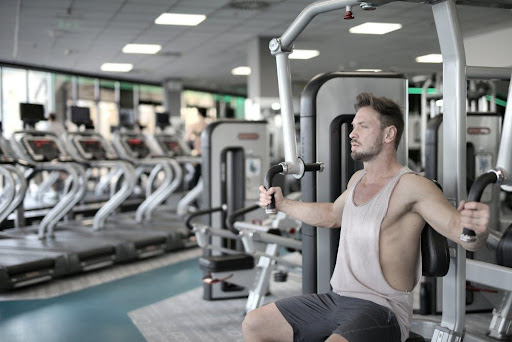
This is another stout chest workout that always delivers. Seated pec decks are the ultimate allrounder leading to the development of pecs, traps, upper back, and arms.
Technique:
Sit on the peck deck machine and grab the vertical handles with an overhand grip such that elbows form a right angle. From this posture, pull the handles apart until you feel a slight stretch across your chest. Pause and return to the starting position and repeat.
- Suspended pushup
This is an intermediate to pro-level variation of the pushup that works chest, delts, pecs, shoulders, and triceps. Pushups, while suspended, are unsteady and fundamentally need top-notch agility and strength to accomplish
Technique:
Set up a pair of robust straps with comfortable handles to suspend your feet in the air placed shoulder-width apart. Get into the push-up position and lockout your elbows with your body, making a 45-degree angle with the floor. As you lower to the floor, engage your back and core, and stop when your palms are just below shoulder level. Push back up and repeat. Remember to engage your core and back for stabilization of your neck and spine.
- Wide grip pushup
This variation is ideal for muscle hypertrophy on your upper chest. Additionally, it results in bigger triceps, biceps, and upper back.
Technique:
Drop down to the pushup stance with arms wider than shoulder-width apart. Keep your back straight and core engaged. Descend into the lowering phase, and when your chest just about grazes the floor, transition into the lifting phase until your arms lock out. Pause, then repeat.
Take-home points
There are more ways than one to feature a robust full chest workout in your everyday routine. Whether you are working out at home or in a gym, creating an effective chest workout can be challenging. If you can create a solid routine, you are one step away from building a solid chest. As a part-time or full-time enthusiast, you should use this narrowed-down list to scout for some of the best chest workouts to build more muscle and try out the recommended variations to get faster results.






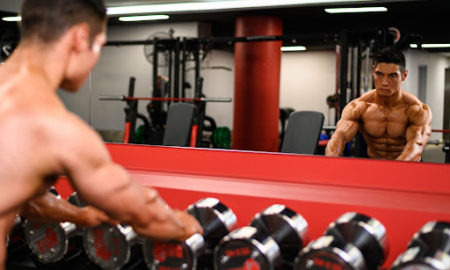
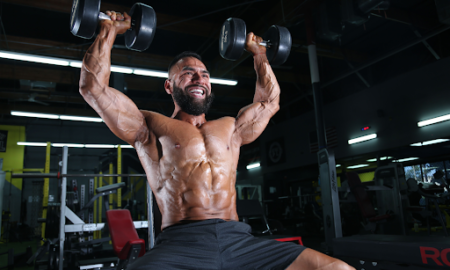







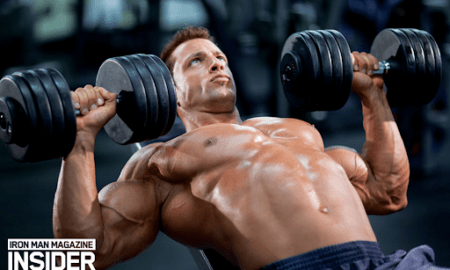






You must be logged in to post a comment Login